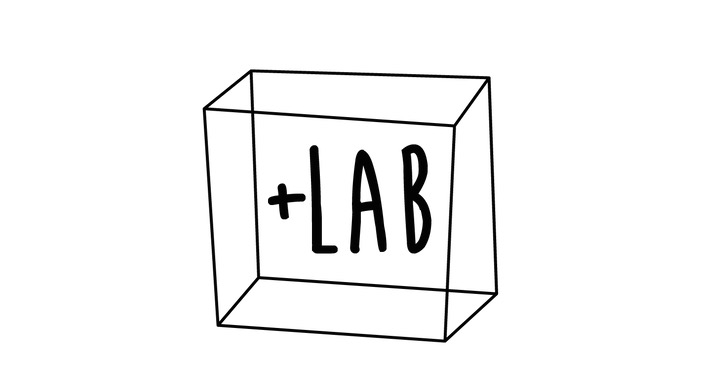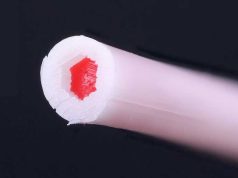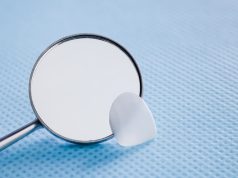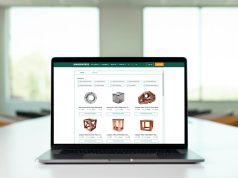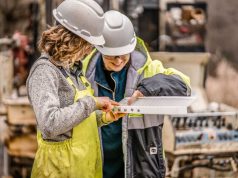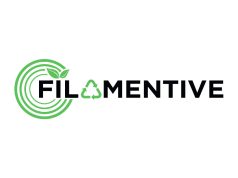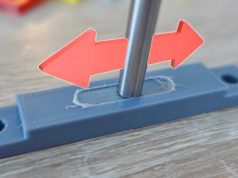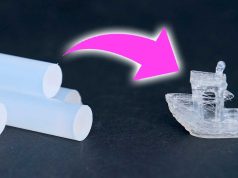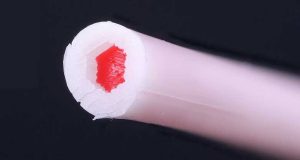+LAB is the 3D Printing Lab of Politecnico di Milano located at “Giulio Natta” Department of Chemistry, Materials and Chemical Engineering.
The laboratory is active since 2013 when the Professor Marinella Levi and her collaborators started to employ engineers, chemists, designers and architects to obtain a multidisciplinary approach to 3D printing in which teaching and research are linked together to develop a new polytechnic method to Additive Manufacturing technology.
One of these research area, ”3D printing composites XYZ”, is focused on the development of high performance materials combined with an intelligent systems of production, in which the typical anisotropy, normally seen on Additive manufacturing processes and composite materials, is meant to be used smartly in order to create lightweight products with high mechanical performance. The project includes mainly matrix thermosetting composite materials, loaded with both short and/or continuous fibers.
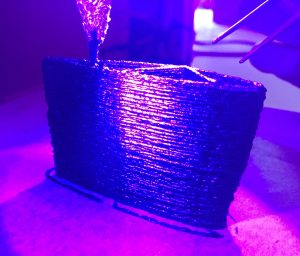
The short fiber composite materials are currently printed using a LDM system which stands for “Liquid Deposition Modeling” that for liquid extrusion involves the use of a tool (syringe extruder or screw dispensing valve) and a polymerization apparatus that allows the thermosetting resin to change from the liquid to the solid state as soon as the material poured out from the nozzle.
Through this LDM printing system we have processed solutions acrylic, epoxy or polyester resins loaded with short inorganic fillers like carbon, aramid, glass, basalt, but also natural ones such as bamboo, cotton, flax, etc. The percentage usage of the fibers compared to the matrix, can currently vary up to a maximum of 60%, but much depends on the length of the fibers and their alignment during the printing process along the extrusion direction.
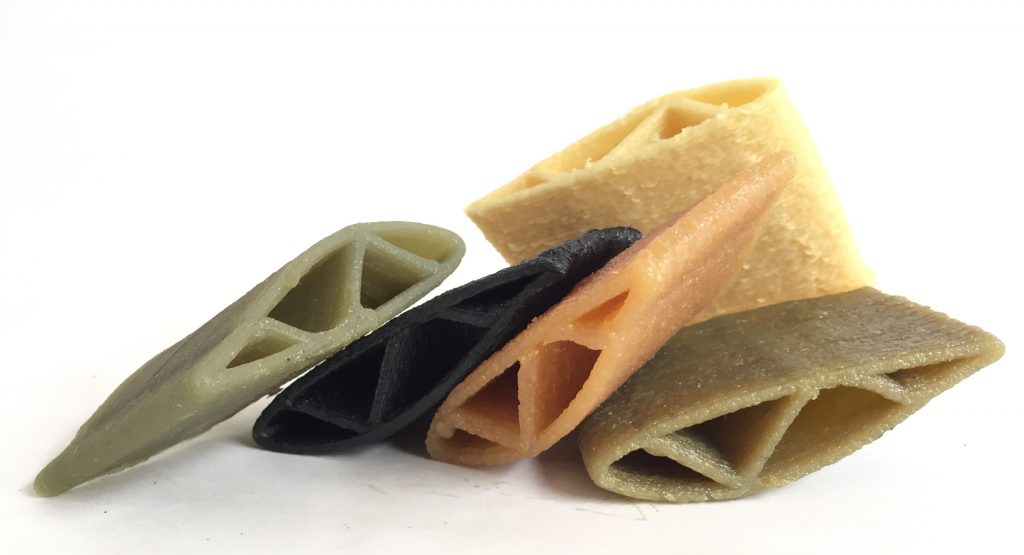
This reorganization of the particles phenomena during the printing process allows to create a structure with better mechanical properties along certain predetermined directions, and due to the immediate change from liquid to solid state is possible to create freeform structures with no support needed.
The Continuous-fiber composite materials are obtained by a patented process called “Continuous fiber composites smart manufacturing”. For more details visit: Polimi/brevetti or 3Dcomposites.xyz
In this apparatus there are three main phases:
The first step is to braid the fibers, made of carbon, glass, aramid, etc. with a various number of filaments, also combined together to form hybrid materials. In the second part of the process those yarns are impregnated with a thermosetting resin (epoxy, acrylic, polyester etc.) and in the final stage the formed material is deposited in a monitored procedure on the building platform. Once the impregnated fibers leaves from the printhead they are treated by a laser in a total or partial manner that is going to tight the cord which becomes self-supported.
This innovative 3D printing method of extruding materials into the open space brings to a new way of conceiving the mechanics of the composite material products, in which the fibers are deposited in the space according to the best direction to support the load.
This is possible using a non-linear slicing algorithms for the realization of artifacts using common XYZ 3D printers, their hacked versions and robotic arms.
As well known Silkworm allows the three-dimensional motion of the head controlled by algorithms generated inside Grasshopper or geometries designed in Rhino3D.
The possibility of having a complete control of the three dimensions, flow ratio and speed, as well as a coherent printing sequence, allows the fabrication of high-strength components enabling the full use of the whole spectrum of possible materials. Modifications of the geometry composing the object, such as infill, perimeters and closing surfaces, substantially affect the mechanical behavior and the combination of different geometry and material opens to many new possibilities.
At +LAB we designed a new three-dimensional infill that reduces the weight of the object, while maintaining the span between supports for top and bottom surfaces unchanged. The objects are also able to show an elastic response that is tunable by controlling the geometric parameters.
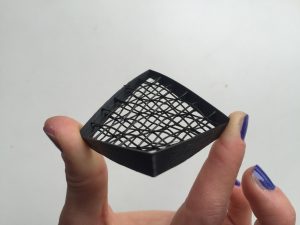
This algorithm is also useful for the realization of fabrics, with the possibility of having a continuous filament, since the warp and weft effect of the final geometry is typical of a weaving process.
In this way it is possible to obtain controlled isotropic behaviors of the object, fading or removing the layering effect, often responsible of delamination under stress conditions, by controlling direction and speed of the nozzle, as well as the flow parameter In short fiber composites or during the braiding process in the continuous fiber filament.
This process becomes very useful when the geometry is firstly examined by a FEM analysis, starting from results and position of principal stress axis in three-dimensional space, for instance it is possible to print 3D trusses following isostatic curves. Part of the material is removed in order to reduce the total mass, without compromising the mechanical performance and stability of the final piece.
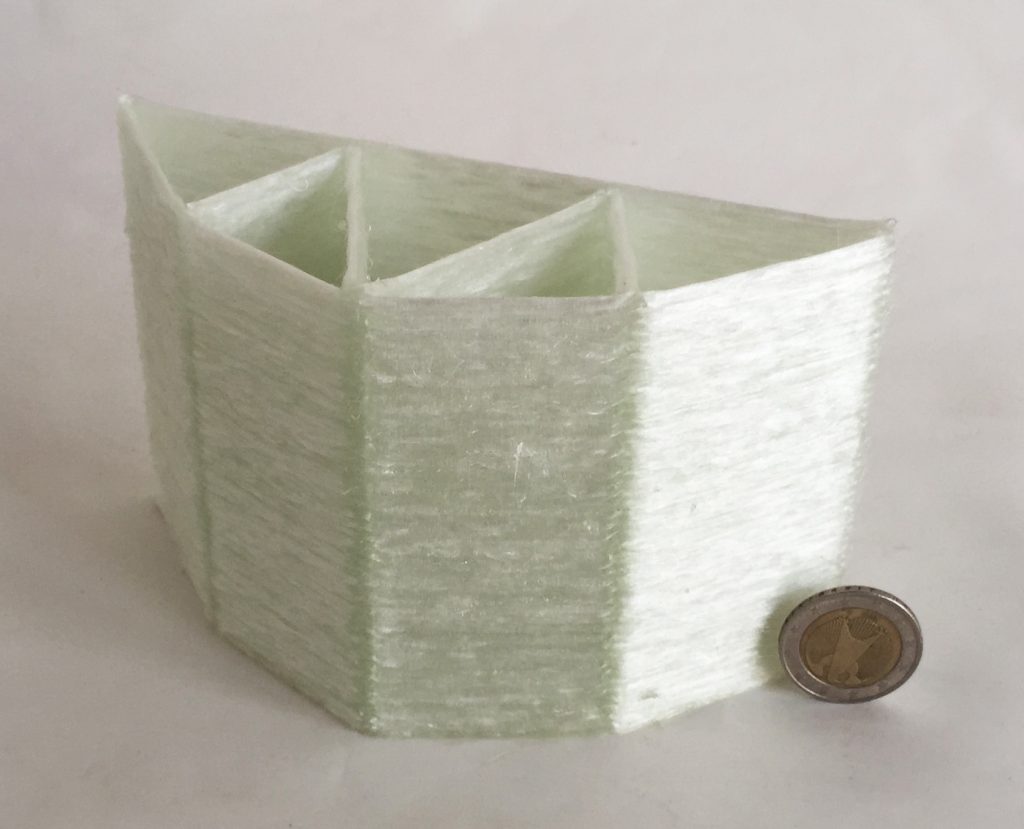
This leads to a better utilization of the material, depositing more, less or none, depending on stress and strain distributions, a typical bio-inspired approach
The process opens new ways of conceiving mechanical parts for applications in various fields such as aeronautics, automotive, civil engineering, architecture and design being able to print different fiber filaments with different matrix even in the same object and at the same time maintaining the connection of the fiber.
Subscribe to our Newsletter
3DPResso is a weekly newsletter that links to the most exciting global stories from the 3D printing and additive manufacturing industry.



